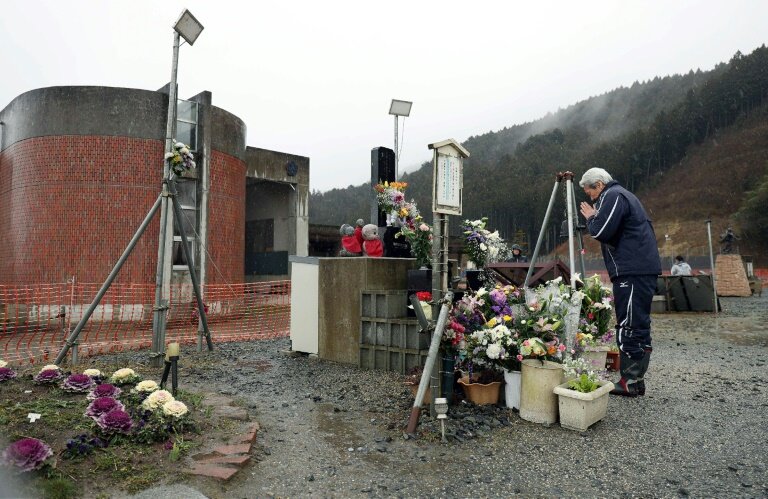BY SOPHIA STROUD | – NukeWatch NM Web Designer
On Friday, March 11, 2011, a 9.0 M earthquake occurred off the East coast of Japan, triggering a massive tsunami in the region of Tohoku. In the Miyagi and Fukushima prefectures of this region, the wave was over 10 meters tall upon landfall. During the 1970s and 80s, coastal residents of Japan welcomed nuclear power, and two plants were built to supply electricity to Tokyo. When the tsunami hit in 2011, many districts of Fukushima lost power, which caused the cooling system in TEPCO’s Fukushima Daiichi nuclear power plant to fail.
This power failure led to a series of nuclear meltdowns and hydrogen-air chemical reactions within the plant, which caused a release of highly radioactive material into the surrounding environment. The radioactive plume released from the Fukushima nuclear power plant was large enough to carry radioactive material for miles in every direction, and nearby residents were immediately evacuated. The Fukushima Daiichi nuclear power plant meltdown and ensuing leakage of radioactive materials was a disaster on the scale of Three Mile Island and Chernobyl.
Nearly all evacuees received a minimal dose of radiation, and in the immediate aftermath of the nuclear accident, public-health experts worried about the possible risk from radiation. According to medical scientist Yuri Rojavin, in the case of the Fukushima Daiichi nuclear disaster, “radioactive particles had become bound to dust and traveled through the atmosphere before setting down. Contamination occurred merely from having the particles fall into the water or on to crops.” This signifies that, for example, if any radioactive particles fall onto a pasture, they may then be eaten by dairy cattle and get into the milk supply. Rojavin also points out that, “Research has demonstrated that insects and predators can also move radioactive particles into the environment through food chain, and that cesium-137 has been identified as a contaminant in US fish supplies.”
There are various links below that give further insight into the history of the Fukushima nuclear crisis as well as the effects of the aftermath, including articles and interactive media about nuclear policy and regulation, climate change, energy policy and politics, health care in the disaster zone, and the psychological impacts on the Fukushima community.
History
Civilian nuclear incidents: An overview of historical, medical, and scientific aspects
Effect of Fukushima Nuclear Disaster on Japanese Ecosystems – Dylan Sarkisian
Managing a crisis: A framing analysis of press releases dealing with the Fukushima nuclear power station crisis
Nuclear Policy and Regulation
Nuclear Policy and Regulation in Japan after Fukushima: Navigating the Crisis
Public Perceptions of Nuclear Energy in Asia After Fukushima Crisis
Dynamics of Nuclear Power Policy in the Post-Fukushima Era: Interest Structure and Politicisation in Japan, Taiwan and Korea
Post-Fukushima energy paths: Japan and Germany compared
Fukushima in review: A complex disaster, a disastrous response
Nuclear policy responses to Fukushima: Exit, voice, and loyalty
Climate Change & Energy Policy
Climate change politics in Japan in the aftermath of the Fukushima nuclear crisis: The United States and Canada
ABE’S NUCLEAR RENAISSANCE: Energy Politics in Post–3.11 Japan
After the meltdown: Explaining the silence of Japanese environmental organizations on the Fukushima nuclear crisis
What was the” discrepancy” in Japan’s energy policy after Fukushima nuclear crisis?
Health Care
Death of the sole doctor at Takano Hospital 6 years after the Fukushima nuclear crisis—who is responsible for health care delivery in the Fukushima disaster zone?
End-of-life breast cancer in an area struck by the 2011 Fukushima nuclear crisis: A case report
Psychological & Mental Health Impacts
Fukushima: Fallout of fear
Disasters and Social Crisis in Contemporary Japan: Political, Religious, and Sociocultural Responses
Propaganda, Corporate Predation and the Fukushima Nuclear Disaster: Nuclear Tsunami: The Japanese Government and America’s Role in the Fukushima Disaster
The longitudinal mental health impact of Fukushima nuclear disaster exposures and public criticism among power plant workers: the Fukushima NEWS Project study
Art & Multimedia
Subversion and nostalgia in art photography of the Fukushima nuclear disaster
Tweeting disaster: An analysis of online discourse about nuclear power in the wake of the Fukushima Daiichi nuclear accident

